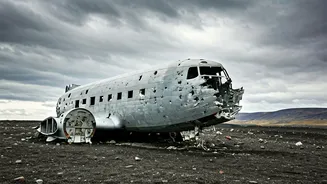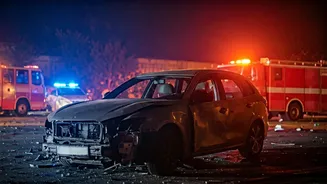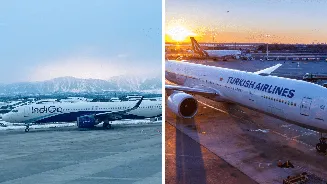Initial Reports Emerge
The quiet of the day was shattered when news surfaced about a Turkish military cargo plane crashing within the borders of Georgia. The precise time and
location of the crash rapidly became the focus of early reports. The reports confirmed that the aircraft, carrying cargo, had gone down, triggering immediate emergency responses. Details began to surface about the number of people impacted by the crash, marking the beginning of a somber period of assessing the situation and commencing rescue operations. The initial announcements emphasized the involvement of Turkish military personnel and the critical necessity to understand the circumstances that brought the plane down.
Swift Emergency Response
Upon receiving the news, a coordinated emergency response was quickly deployed. Georgian authorities, alongside their Turkish counterparts, sprang into action to assist. Rescue teams were dispatched immediately to the crash site to search for survivors and manage the casualties. Simultaneously, efforts were focused on securing the area and establishing communication channels to coordinate rescue operations. The rapid arrival of emergency services was essential, given the potential for survivors and the need to secure the site for further investigations. The combined efforts of both nations highlighted the urgency and cooperation required in such moments of crisis. Medical personnel were also on standby, preparing to provide assistance to anyone requiring it.
Casualties and Impact
As the initial phase of the emergency response continued, the grim reality of the situation began to surface. Reports confirmed that the crash had resulted in casualties, with the precise number subject to verification as the situation evolved. This unfortunate news sent shockwaves through both Turkey and Georgia. The focus shifted towards notifying the families of the victims and providing support during the difficult time. The tragedy prompted expressions of sympathy and solidarity from international observers, who acknowledged the severity of the event. The impact of the crash was felt deeply, underlining the human cost and the suddenness with which events such as this can unfold.
Investigation Commences
In the immediate wake of the crash, the necessity for a thorough investigation was recognized. Authorities from both countries declared that inquiries would be initiated to determine the cause of the disaster. Aviation experts were expected to be involved to examine the aircraft's wreckage, analyze flight data recorders, and assess all factors contributing to the accident. The investigation was also set to scrutinize the flight path, weather conditions at the time, and any maintenance records of the aircraft. Transparency in the investigation would be crucial, allowing the aviation community and the public to learn from the tragedy and, hopefully, prevent similar incidents from occurring in the future.
International Reactions
The news of the Turkish cargo plane crash quickly spread, prompting reactions from around the world. International organizations and governments shared their condolences and expressed readiness to provide support if necessary. Statements of solidarity emphasized the importance of cooperation and aid during times of crisis, which reflect the interconnected nature of the global community. Some countries offered assistance with the investigation, whether in terms of technical expertise or specialized resources. This global response underscored the shared concern for those affected by the tragedy and reaffirmed the values of cooperation in addressing such situations.
Future Implications
The aftermath of the plane crash will likely lead to significant implications and considerations for aviation safety. Reviews of safety protocols and procedures may be prompted, along with an increased focus on risk assessment and mitigation. The aviation industry is constantly looking for ways to improve its safety standards. International cooperation will be vital in the weeks and months that follow the crash, with the results of the investigation shaping future aviation policies and practices. This includes the need to update safety measures and training methods to avoid such tragedies. Lessons learned will be critical for avoiding similar incidents and ensuring the safety of air travel worldwide.
















